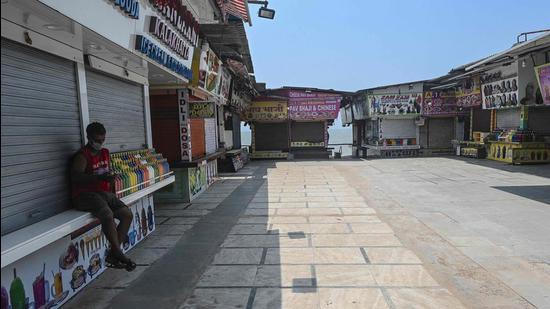Q1 2021-22 headed towards an ominous convergence with Q1 2020-21
What will be the economic impact of the second wave? We are still in the first quarter of fiscal year 2021-22. A lot will depend on the time it takes for the second wave to peak and how fast India can vaccinate its population
India’s second wave of Covid-19 infections is much worse than its first. During the first wave, Indian economy was among the worst affected by the pandemic, with an expected GDP contraction of 8% in 2020-21. What will be the economic impact of the second wave? We are still in the first quarter of fiscal year 2021-22. A lot will depend on the time it takes for the second wave to peak and how fast India can vaccinate its population. Answers to both these questions are still in the realm of uncertainty. An HT analysis shows that on some crucial indicators, the first quarter of 2021-22 is already showing signs of an ominous convergence with the first quarter of 2020-21. GDP contracted by a massive 24% in April-June 2020-21.

Sharp fall in NIBRI since February, close to levels in mid-June 2020
The Nomura India Business Resumption Index (NIBRI) reached 64.5 in the week ending May, 9 2021. It reached 99.3 in the week ending February 21, which was the closest it got to 100, the pre-pandemic level of economic activity. The latest NIBRI value is lower than what it was in the week ending June 14, 2020 (67). A research note by Nomura economists Sonal Varma and Aurodeep Nandi says that Nomura has lowered the GDP growth forecast for 2021-22 from 12.6% to 10.8%.
See Chart 1: NIBRI
Convergence in stringency index and mobility levels for 2020 and 2021
The government of India imposed one of the most stringent lockdowns beginning March 25, 2020, at a time when India was recording 69 cases a day on average that week. This time, despite cases reaching record levels, the Centre has not imposed a nationwide lockdown and such decisions have been left to state governments. A hands-off approach by the Centre has not prevented a sharp rise in what some call stringency index, a measure of how strict a lockdown is. A comparison of this index compiled by Oxford University showed that the difference between the 2020 and 2021 values was 42.12 points on April 1.This has come down to 8.3 points on May 10. Similar trends can be seen for Google mobility indices as well.
See Chart 2A and 2B: Policy stringency index and Google Mobility Index from April 2020 onwards
Does fall in mobility exaggerate economic damage?
There is a view among economists that even a sharp fall in mobility restrictions need not lead to a concomitant fall in economic activity. For example, the note by Nomura economists Sonal Varma and Aurodeep Nandi says: “We would, however, caution that the drop in mobility exaggerates the hit to economic activity. International experiences suggest the correlation between mobility and GDP growth is much weaker during the second wave, due to more targetted restrictions and more pandemic-adept consumers and businesses”. A CRISIL research note also makes a similar point by highlighting the example of Germany, the UK, and the US where the second or third wave of Covid-19 infections led to higher stringency conditions but higher PMI-manufacturing values in the January-March 2021 quarter than in January-March 2020 quarter. PMI stands for Purchase Managers Index and is accepted as a reliable measure of future economic activity.
Also Read | Fuel rates at record high; petrol costlier by ₹1.40/litre in a week
But it may not be accurate to assume the same for India.
“Comparisons to advanced industrialised countries are not appropriate because governments in these countries, in general, have spent much more in fiscal support than India has. Secondly, India is going into the second wave with neither employment nor incomes fully recovered and with households as well as small businesses in debt. Third, the Indian economy has a far greater proportion of the workforce dependent on mobility for livelihoods in sectors such as retail, food/restaurants, and transport”, said Amit Basole an associate professor of economics at Azim Premji University. “Our analysis of Google mobility data shows that last year, for the months of March to October, a 10% decline in mobility was associated, on average, with a 7.5% fall in income,” he said.
All Access.
One Subscription.
Get 360° coverage—from daily headlines
to 100 year archives.



HT App & Website







